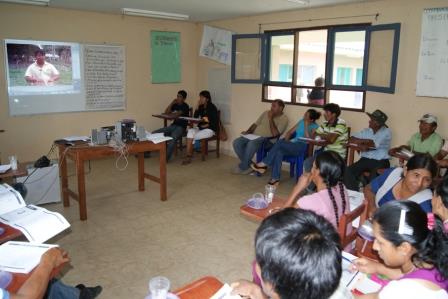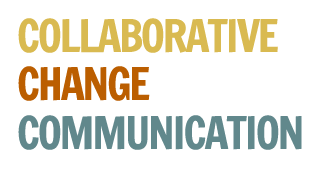 As part of the Communication for Sustainable Development Initiative (CSDI), FAO and the National Institute for Innovation in Agriculture, Livestock and Forestry (INIAF) of Bolivia carried out participatory communication appraisals and consultative processes with farmer organizations, small-scale producers, local governments, NGOs and community media in order to identify local needs in terms of agricultural information.
As part of the Communication for Sustainable Development Initiative (CSDI), FAO and the National Institute for Innovation in Agriculture, Livestock and Forestry (INIAF) of Bolivia carried out participatory communication appraisals and consultative processes with farmer organizations, small-scale producers, local governments, NGOs and community media in order to identify local needs in terms of agricultural information.
As a result, they developed four Knowledge and Communication Modules (Modulos de Conocimiento y Comunicación) following the ComDev principles
- practical learning designed for smallholders and rural families
- direct reference to the producers’ reality
- use of local language
- recovery of farmers’ traditional knowledge
- active participation of producers in the collective learning process
- use of audiovisual media to overcome literacy barriers for transmission of knowledge
- choice of appropriate technical information according to the different groups
Each module documented local agricultural practices – pasture management for dairy cattle, direct sowing for sustainable production, water harvesting for diversified crops, forage conservation – in various formats such as videos, audio tracks, booklets, flipcharts, brochures and posters.
The modules also included a facilitator guide for local technicians, communication practitioners, extensionists and community agents to use the modules for knowledge and experience sharing at the community level.
Through a combination of multimedia materials and face-to-face meetings, the local facilitators – so called operadores locales de la innovación – were able to involve hundreds of small producers from 54 rural communities across the country.
Module on Pasture Management for Dairy Farming
The module was developed with local producers and technicians in Yapacaní, department of Santa Cruz (read the case study) and included the following components:
1. Thematic Audiovisual Unit
- Presents main ideas and advice defined with local stakeholders.
- Displays the processes that occur throughout the production cycle.
- Facilitates understanding of the key concepts, practices and techniques.
Watch the 5 videos in Spanish and Quechua
2. Participant’s Booklet
- Printed material that complements and reinforces the content conveyed by the thematic audiovisual unit.
- Expands and deepens specific information and themes of the video.
- It stays with the producers as a permanent reference and memory of what they learned in the audiovisual material.
Download the Participant’s Booklet
3. Facilitator’s Guide
- Step-by-step guide to orient facilitators in conducting the training-learning process.
- Provides guidelines for MCC tools and implementation of practices.
- It contains additional technical information on the subject, to broaden the facilitator’s knowledge
Download the Facilitator’s Guide
4. Support materials (audio and print) in Spanish and Quechua
- Complement and strengthen the use of the video or support technicians in situations where the video cannot be used.
- These can be brochures, flip charts, posters, radio programs, etc.
Listen to the radio spots on establecimiento de pasturas, banco proteínico-energético, cerco eléctrico para ganaderia lechera and división de potreros para ganaderia lechera
Listen to the full radio programs on establecimiento de pasturas, alimento complementario and división y rotación de potreros
Download the leaflets on pasturas mejoradas, cerco eléctrico y alimento complementario
5. Face-to-face and practical interactions
- Allow to adjust the information to the level of knowledge and characteristics of the stakeholders.
- Serve to recover and share experiences and knowledge with the participants.
- Lead to experimentation and complement the process of learning and socialization for the appropriation of knowledge.
See the pictures in CSDI Flickr
Learn more about the CSDI experience in Bolivia in Module 7 of the Communication for Rural Development Sourcebook
